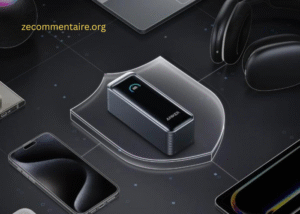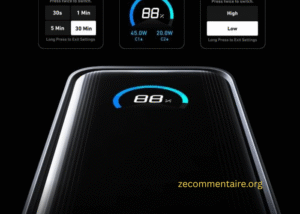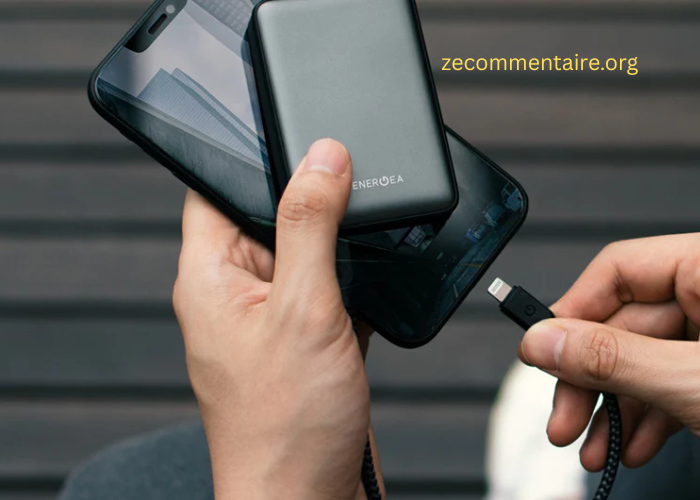Power banks are indispensable tools for everyone who relies on mobile devices. They provide critical backup energy whether commuting, vacationing, or just away from a power source. However, many consumers report that their power banks are deteriorating too rapidly, which they frequently blame on manufacturing flaws. In actuality, how you use your equipment has a big impact on its longevity. A well-maintained power bank can last for several years, but reckless use might limit its life to only months. This book examines the important elements that influence longevity and provides practical advice to help you make the most of your power bank investment.

What Factors Affect Your Power Bank’s Longevity?
Battery Chemistry and Cycle Count
The longevity of your power bank is directly proportional to the type of battery it contains—typically lithium-ion or lithium-polymer. These batteries have a limited number of charge-discharge cycles, often between 300 and 1000 complete cycles. Each full cycle gradually reduces the battery’s capacity; thus, the more you use it, the faster it ages. Lithium-polymer batteries often live longer due to their stability, but they are also more susceptible to severe temperatures. Understanding your power bank’s battery chemistry allows you to set reasonable expectations and determine how you should use it on a daily basis to optimize its potential.
Usage Patterns and Charging Habits
Frequent, unneeded charging and draining increase battery wear. Charging your power bank while it is not below 30% capacity, or topping it off often, might diminish cycle efficiency. Similarly, entirely depleting it before charging drains the battery. Using quick chargers or low-quality connections can also produce extra heat, contributing to faster deterioration. It is best to charge your power bank when it reaches 20-30% and unplug it before it reaches 100%. Mindful charging techniques considerably prolong the battery’s usable life and keep it at full charge for longer periods.
Environmental and Storage Conditions
Heat is a silent killer of batteries. Leaving your power bank in hot automobiles, direct sunshine, or near heating equipment can permanently harm the batteries. Extreme cold, on the other hand, might momentarily limit performance while gradually increasing internal resistance. It’s best to keep the gadget dry and at a normal temperature. Humidity can damage internal components, and dust can clog the ports. If you intend to store the power bank for several months, keep it charged to around 50% and keep it in a cool, dry area to preserve it in good condition.

How Should You Use Your Power Bank to Make It Last Longer?
Best Charging and Discharging Habits
Charge your power bank using a suitable charger, ideally one provided by the manufacturer. Always avoid charging it to 100% or letting it go to 0%. Keeping it between 20% and 80% achieves a decent mix of use and lifespan. Do not keep it plugged in overnight, since extended charging causes heat buildup. If the power bank enables pass-through charging (charging itself while charging another device), utilize it sparingly because it puts stress on the battery. Moderate charging practices protect your smartphone while also improving its long-term battery retention.
Avoid Common Misuse
Common misuses include using your power bank while it is charging, exposing it to dampness, and overloading it with incompatible devices. Many users neglect low-quality USB connections, which can lead to overheating and voltage instability. Ignoring overheated warning flags or utilizing a bloated battery bank is risky and impairs performance. Also, don’t put heavy things on the power bank or stuff it in tight locations with inadequate airflow. Preventing physical damage and heat stress is critical to extending its life and ensuring that your equipment runs securely and reliably.
Matching Device and Power Bank Demands
Power banks have particular output ratings, and utilizing them with devices that demand higher or incompatible power outputs may overload internal circuits. Charging a laptop with a phone-specific power bank, for example, depletes the battery faster and may cause the item to overheat. Similarly, combining a high-output power bank with low-power gadgets might waste energy. Match your device’s input requirements to your power bank’s capabilities. Before connecting, make sure the voltage and ampere specifications are correct. Efficient pairing promotes battery safety and longevity by eliminating overcharging, underperformance, and irreversible battery damage caused by electrical stress.
Smart Storage & Maintenance Practices
Proper Storage for Long-Term Idle Use
If you do not intend to use your power bank for an extended period of time, do not store it fully charged or empty. Maintain a 50% charge before storing it. Keep it cool and dry, away from direct sunshine, heat, and freezing temperatures. To prevent dust buildup in ports, store them in a clean drawer or box. To keep the battery alive, recharge it a little every 2-3 months. Avoid keeping it near magnetic or electrical equipment, since it may interfere with circuits. Proper storage guarantees that the power bank is reliable when you need it again.
Cleaning and Physical Care
Use a gentle, dry cloth to wipe any dust or smudges from your power bank. Cleaners that include alcohol or water should never be used directly, especially close to charging connections. Regularly inspect the USB ports for debris that might cause short circuits or impair connection quality. If you don’t have a protective case, don’t put your power bank in your luggage or in small pockets. Frequent examinations can identify dents, swelling, or overheating symptoms that could indicate interior injury. Consider your power bank to be a delicate electrical gadget. Its operating life may be prolonged, and safe use may be maintained by gentle handling, regular cleaning, and avoiding physical shocks.
Monitoring and Replacing When Needed
Even with appropriate maintenance, power banks deteriorate with time. Keep an eye out for symptoms of inefficiency, such as delayed charging, high temperatures, or quick power loss. If your power bank takes substantially longer to charge or empties quicker than usual, it is likely reaching the end of its cycle life. Swollen casings and unusual sounds during operation are red signals; cease using it immediately. Manufacturers frequently give predicted cycle counts or warranty terms; utilize them as reference points. If your power bank’s safety or performance degrades, don’t hesitate to replace it. Regular monitoring maintains peak performance and protects your linked devices.
Conclusion
A power bank is more than just a battery; it’s a tool that supports your daily tech life. Whether you’re using a standard model or an iphone mobile power bank, maximizing its lifespan is a combination of smart charging habits, safe storage, and attentive maintenance. Steer clear of physical harm, heat, and overcharging. Make sure the power bank’s output meets the demands of the device, and never disregard any warning indications of deterioration. Your power bank can last for many years if you take good care of it and use it carefully. Whether you’re a professional, student, or tourist, prolonging the life of your power bank will save you money and lessen the amount of electronic trash you produce. It will constantly maintain your gadgets operating if you take good care of them.

